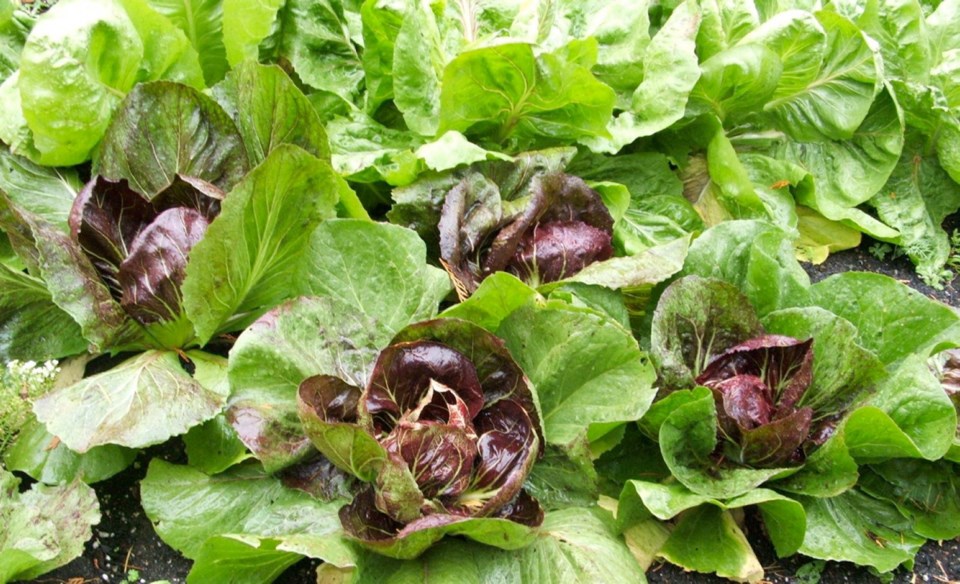The soil in our garden beds is a precious resource that merits our attention and protection. Soil is not just a medium to hold plants upright. It is a living and life-giving community of organisms and microorganisms that are a source of health for the plants we grow.
At this time in the year, I’m more conscious than ever of the need to protect the soil and the life within it from harsh weather ahead. Friends know this. They donate bags of lovely leaves, which I’ve been busy laying over emptied vegetable and annual flower plots.
As the leaves buffer the soil from pounding rains, they also provide protective cover for beneficial insects such as ground beetles. By early spring, the leaves will be broken down enough for digging under to complete their on-site composting and release of nutrients.
Extra leaves are mixed into compost piles. I have five compost heaps, lined up against a side fence and separated by low walls of square openwork cement “bricks.” At this point, I’m topping up the first three heaps with garden clippings before forking them over and covering them loosely with sheets of plastic to prevent the leaching of nutrients in winter rains.
In the spring, I’ll mix them up a little, add a top layer of good garden soil, topsoil or fish compost and let them settle. In the warmth of mid- to late spring, each of the three prepared heaps will receive a pumpkin or a winter squash transplant. A partly “finished” compost heap is ideal for growing these sprawling food plants that stay growing and producing in the garden for four or five months.
Planting sites like compost heaps and raised, layered “lasagna” plots are a special help in gardens with soils that are problematic. In my garden, such extra sites are perfect for long-term plantings that are challenged by intrepidly invasive cedar roots.
More mulching. I try to get much of the garden mulched, in one way or another, while usable outdoor weather lasts in the fall, because there is too much garden to leave it all until spring.
As well as mulching emptied plots with leaves as winter soil protection, I’m gradually tidying beds housing shrubs, small trees and perennials, cultivating lightly around and between the plants and spreading compost over the cleared soil. I’m using fish compost because I have easy access to it and its nitrogen content is ideal for my garden’s soil conditions.
Early spring is the preferred time to do this because some leaching of nutrients from the compost occurs in winter rains, but I know I’ll be far too busy in spring with plot preparation, seeding, weeding, pruning and transplanting to accomplish all the plant mulching then.
In the ornamental garden, roses benefit from a little extra attention. Keep fallen leaves gathered up and do not compost them if the plants had any black spot on the foliage this year. By December, aim to have removed all the leaves from the plants. Clean well under and around the de-leafed roses and mulch lightly with compost. Prune in late winter, cultivate lightly around the plants and top up the mulch layer to help smother any disease spores lingering in the soil.
In the food garden, winter and over-wintering vegetables also benefit from mulching around them with leaves or compost. Stake tall plants such as brussels sprouts and sprouting broccoli against winter winds.
As temperatures drop, I’ll be watching my plot of carrots and beets, which will feed me through the winter. During the worst of last winter, some small animal — probably a bunny — gnawed at the tops of a few carrots that I’d not managed to mulch.
This fall, once top growth has died back, I’ll clean it away and cover the plot with five centimetres of soil from a nearby area. A secured sheet of old, used floating row cover will complete the protection of this treasured bit of my outdoor winter “pantry.”
The leeks will be fine. They withstand cold well and aren’t usually bothered by winter pests. Still, I like to mulch between the rows and around the planting with leaves and/or soil. Looking forward to leek and pea tarts this winter.
Endive and radicchio plants have re-grown following a light deer browsing earlier in the fall. Layers of used floating row cover will keep them in good usable condition in cold weather.



